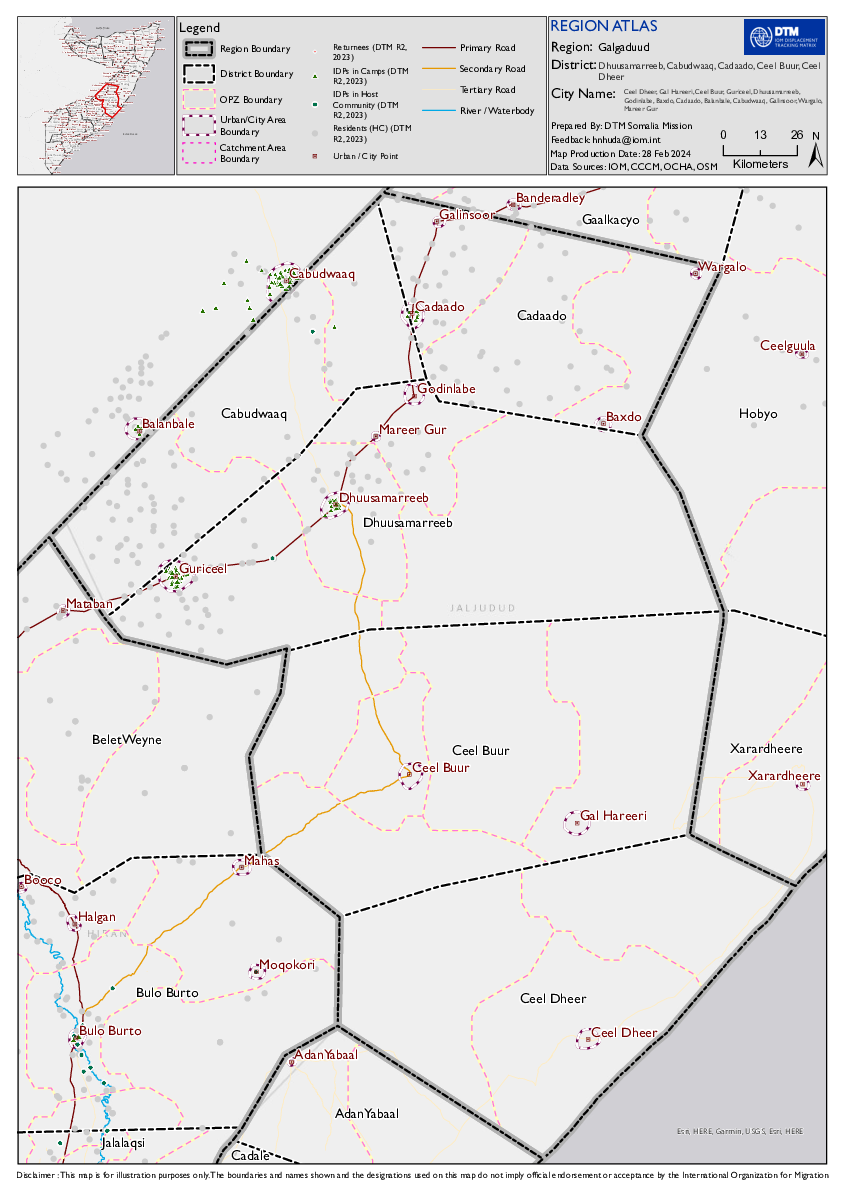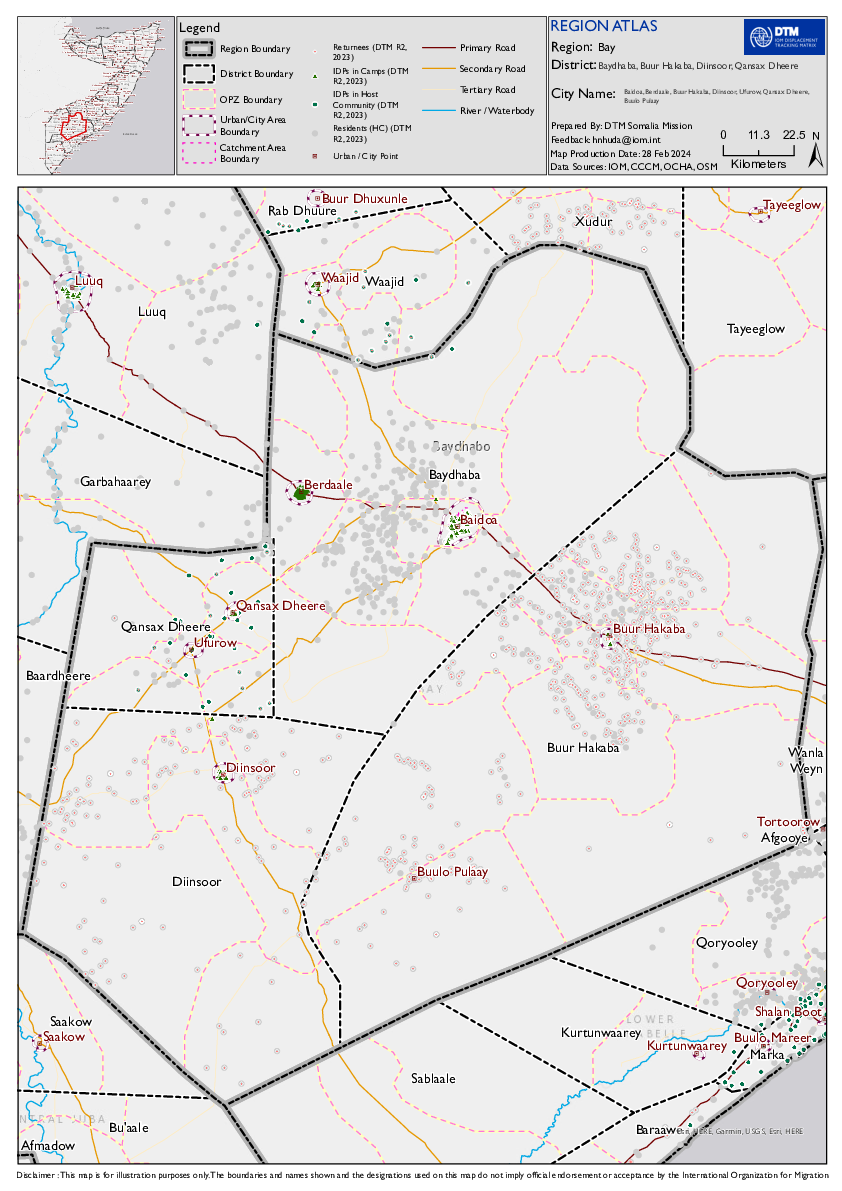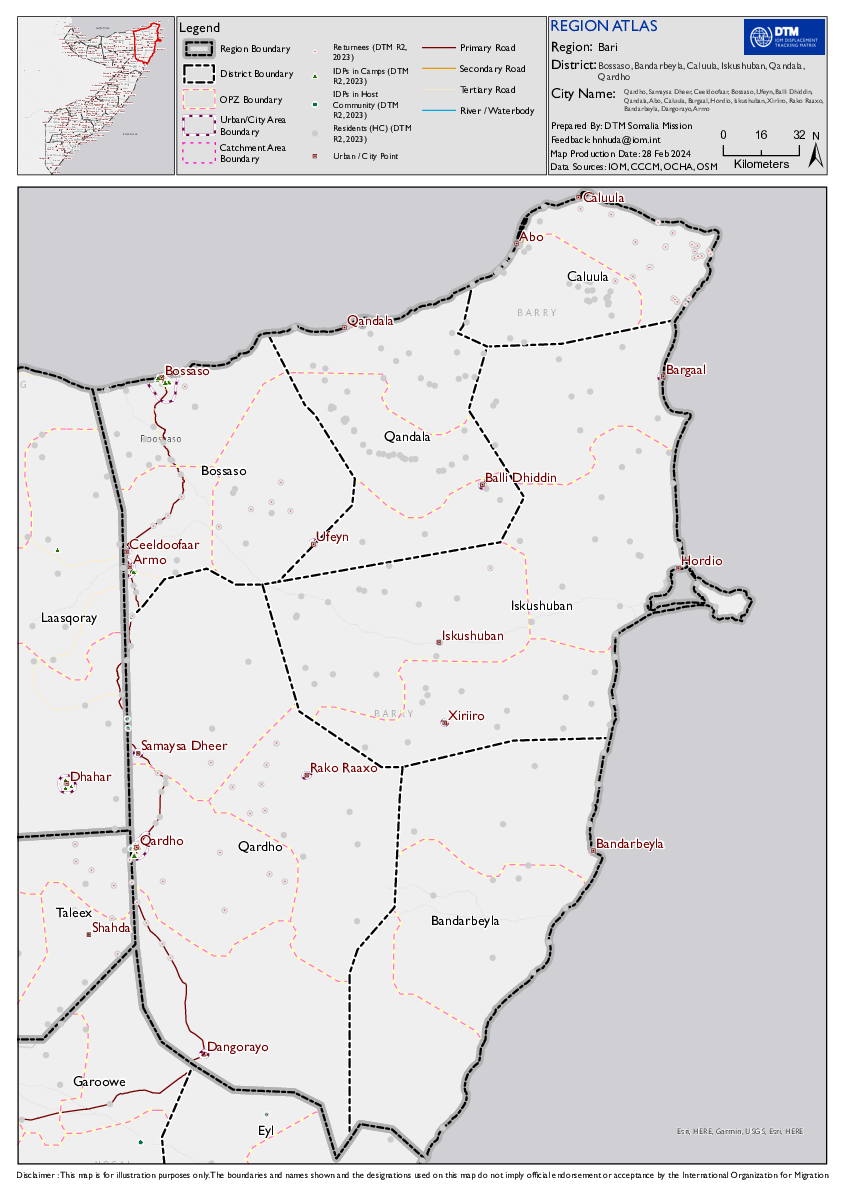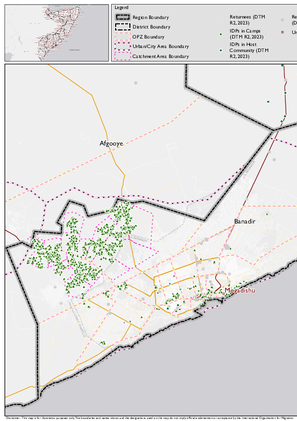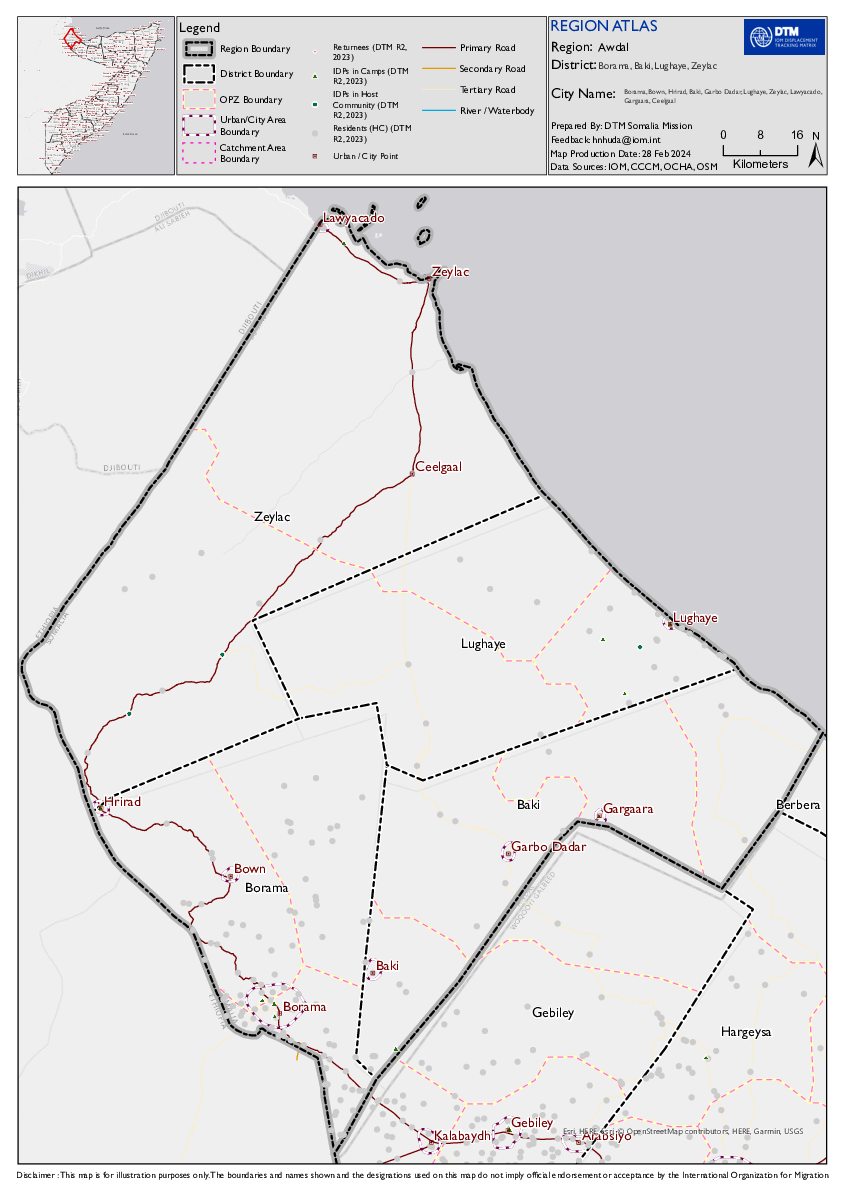-
Countries
-
Data and Analysis
-
Special Focus
-
Crisis Responses
Baseline 2, an area-based assessment, is the second step of Mobility Tracking implemented at settlement level and aims to quantify presence of population categories. For the round 2, data collection occurred between February 2023 and January 2024.
Baseline 2, an area-based assessment, is the second step of Mobility Tracking implemented at settlement level and aims to quantify presence of population categories. For the round 2, data collection occurred between February 2023 and January 2024.
Baseline 2, an area-based assessment, is the second step of Mobility Tracking implemented at settlement level and aims to quantify presence of population categories. For the round 2, data collection occurred between February 2023 and January 2024.
Baseline 2, an area-based assessment, is the second step of Mobility Tracking implemented at settlement level and aims to quantify presence of population categories. For the round 2, data collection occurred between February 2023 and January 2024.
Baseline 2, an area-based assessment, is the second step of Mobility Tracking implemented at settlement level and aims to quantify presence of population categories. For the round 2, data collection occurred between February 2023 and January 2024.
Baseline 2, an area-based assessment, is the second step of Mobility Tracking implemented at settlement level and aims to quantify presence of population categories. For the round 2, data collection occurred between February 2023 and January 2024.
Baseline 2, an area-based assessment, is the second step of Mobility Tracking implemented at settlement level and aims to quantify presence of population categories. For the round 2, data collection occurred between February 2023 and January 2024.

Contact
DTM Yemen, iomyemendtm@iom.int
Language
English
Location
Yemen
Period Covered
Mar 17 2024
Mar 23 2024
Activity
- Mobility Tracking
- Event Tracking
IOM Yemen DTM’s Rapid Displacement Tracking (RDT) tool collects data on estimated numbers of households forced to flee on a daily basis from their locations of origin or displacement, allowing for regular reporting of new displacements in terms of estimated numbers, geography, and needs. It also tracks returnees who returned to their location of origin.
From 1 January to 23 March 2024, IOM Yemen DTM tracked 879 households (HH) (5,274 Individuals) who experienced displacement at least once.
Between 17 and 23 March 2024, IOM Yemen DTM tracked 34 households (204 individuals) displaced at least once. The majority of people moved into/within the following governorates and districts:
- Ma’rib (22 HHs) – Ma’rib (11 HHs), Ma’rib City (10 HHs), Harib (1 HH) districts. Most displacements in the governorate originated from Ma’rib and Al Hodeidah.
- Al Hodeidah (5 HHs) – Al Khukhah (5 HHs) district. Most displacements in the governorate originated from Ta’iz and Al Hodeidah.
- Ta’iz (5 HHs) – As Silw (2 HHs), Al Maafer (1 HH), Al Misrakh (1 HH) districts. Most displacements in the governorate originated from Ta’iz and Aden.
The majority of people moved from the following governorates and districts:
- Al Hodeidah (8 HHs) – Bajil (3 HHs), At Tuhayta (2 HHs), Bayt Al Faqih (1 HH) districts.
- Ta’iz (8 HHs) – Jabal Habashi (3 HHs), Al Makha (2 HHs), As Silw (2 HHs) districts.
- Ma’rib (6 HHs) – Al Jubah (3 HHs), Harib (2 HHs), Raghwan (1 HH) districts.
IOM identified 15 households displaced in the previous reporting period, which covered 10 - 16 March 2024, in the governorates of Ma'rib (5 HHs), Al Hodeidah (5 HHs), Ta’iz (3 HHs), and Ad Dali (2 HHs). These figures have been added to the cumulative displacement total recorded since the beginning of the year.
Contact
DTM Yemen, iomyemendtm@iom.int
Location
Yemen
Activity
- Mobility Tracking
- Event Tracking
Period Covered
Mar 17 2024 -Mar 23 2024
From 1 January to 23 March 2024, IOM Yemen DTM tracked 879 households (HH) (5,274 Individuals) who experienced displacement at least once.
Between 17 and 23 March 2024, IOM Yemen DTM tracked 34 households (204 individuals) displaced at least once. The majority of people moved into/within the following governorates and districts:
- Ma’rib (22 HHs) – Ma’rib (11 HHs), Ma’rib City (10 HHs), Harib (1 HH) districts. Most displacements in the governorate originated from Ma’rib and Al Hodeidah.
- Al Hodeidah (5 HHs) – Al Khukhah (5 HHs) district. Most displacements in the governorate originated from Ta’iz and Al Hodeidah..
- Ta’iz (5 HHs) – As Silw (2 HHs), Al Maafer (1 HH), Al Misrakh (1 HH) districts. Most displacements in the governorate originated from Ta’iz and Aden.
The majority of people moved from the following governorates and districts:
- Al Hodeidah (8 HHs) – Bajil (3 HHs), At Tuhayta (2 HHs), Bayt Al Faqih (1 HH) districts.
- Ta’iz (8 HHs) – Jabal Habashi (3 HHs), Al Makha (2 HHs), As Silw (2 HHs) districts.
- Ma’rib (6 HHs) – Al Jubah (3 HHs), Harib (2 HHs), Raghwan (1 HH) districts.
Population Groups
Survey Methodology
Unit of Analysis Or Observation
Type of Survey or Assessment
Keywords
Geographical Scope
Administrative boundaries with available data
The current dataset covers the following administrative boundaries

Contact
DTMAfghanistan@iom.int
Language
English
Location
Afghanistan
Period Covered
Mar 10 2024
Mar 16 2024
Activity
- Survey
- Flow Monitoring Survey
- Flow Monitoring
In response to recent movements, IOM Afghanistan re-launched its DTM Flow Monitoring activity at the beginning of 2024 to better understand the mobility dynamics at Afghanistan’s borders. On 10 January 2024, DTM began deploying field teams at four border crossing points with the Islamic Republic of Iran (IRN) and Pakistan (PAK), expanding to another border crossing point, Ghulam Khan, as of 11 February (see map below for the locations of all five crossing points), to conduct two interlinked exercises. The first is a headcount of all individuals entering or leaving Afghanistan (including returnees), also called Flow Monitoring Counting (FMC), to gauge flow volume. The second is a survey of randomly selected Afghan national individuals or groups entering or leaving Afghanistan, also called the Flow Monitoring Survey (FMS), to understand the profiles, motivations, and vulnerabilities of the target population. This snapshot provides key findings combining various IOM data sources, including DTM Afghanistan’s FMC and FMS activities, DTM Pakistan’s Flow Monitoring of Afghan returnees, and IOM Afghanistan’s Cross-Border Post-Arrival Humanitarian Assistance (CB-PAHA) program, for the period 10 to 16 March 2024. For more information about methodology, see the section in the last page of this report titled “IOM INFLOW DATA.”

